How did previous generations imagine daily life in our contemporary age?, the Museum für Kommunikation Frankfurt asked itself.
Specifically, how did previous generations imagine technology integrating into and assisting daily life in our contemporary age? A question which naturally leads into questions of how we imagine technology integrating into and assisting daily life in our contemporary age? How does our contemporary age imagine technology integrating into and assisting daily life in coming ages?
The answers, as presented and discussed in context of the exhibition Back to Future. Technology visions between fiction and reality, may surprise you, may appear familiar to you, may surprise you in that they appear familiar to you. And in their surprising familiarity could, should, stimulate more critical reflections on the role, function, purpose and place of technology in our cultures and societies, and of our relationships with and to technology......
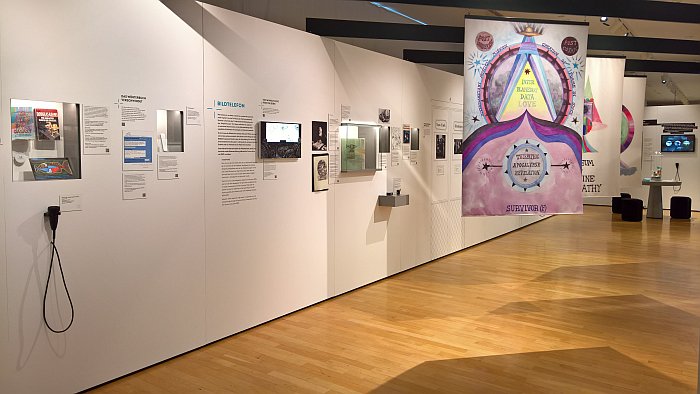
For all that fiction and reality are opposing poles, they also have a natural tendency to inform and influence one another; as positions fiction and reality dwell on either side of a very fluid, hazy, border and there exists an ongoing interplay between the two. In certain regards fiction and reality can, should, must? be considered dependent on one another.
An interplay and dependency the Museum für Kommunikation explore in Back to Future via, and as the sub-title subtly implies, technological fictions and technological realities. And thereby via not only one of the arenas in which the border between reality and fiction is particularly difficult to discern, but also one of the more readily tangible in its relevance to human society and human culture.
An exploration undertaken by the Museum für Kommunikation in four chapters each focussing on a different aspect of that fluid, hazy, border between fiction and reality in context of technology and humanity: Optimization of the Human Being, that desire to extend and expand the naturally limited possibilities of the human; Boundless Communication, that desire to not only connect with those in far off destinations, but with those who speak other tongues; Overcoming Space and Time, that desire to travel, that desire to be transported away from your physical and metaphysical location; The Search for Another World, that desire to explore, and colonise, domains other than our terrestrial sphere on planet Earth.
And, yes, we did deliberately use "desire" in context of each chapter, for as much as being an exhibition about humanity and technology, Back to Future is also an exhibition about human desires. And the unshakable human belief that whatever the question, the answer is new technology.
But is that a fiction or a reality?
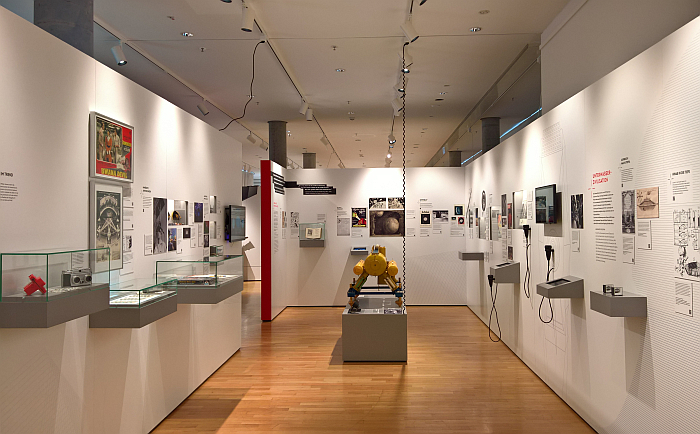
Although as a thematic exhibition Back to Future has no inherent chronology, its four chapters do follow a chronological flow; or more accurately, its numerous sub-chapters all flow from an ancient perspective over more recent historical perspectives and onto our age and future perspectives.
Or put another way.
The chapter Boundless Communication, for example, contains discussions on Videophones, Cell Phones, the Internet and Universal Translators, the latter of which is discussed via very real efforts since the 17th century to break down the communication barriers erected by our innumerable global languages, and also how that desire is presented and reflected in fictional contexts: a progression followed over, and amongst other projects, Johann Joachim Becher's 1661 Character, pro notitia Linguarum Universali which attempted to enable instant translations on the basis of a numerical, a computational, system; Murray Leinster's 1945 short story First Contact in which a universal translator is employed to allow humans and aliens to communicate; IBM's 1950s experiments with machine translations; AltaVista's Babel Fish launched in 1997 as one of the first online translators, and which takes its name from the translating fish in Douglas Adam's late 1970s The Hitchhiker's Guide to the Galaxy; and on to the position that although today universal translators are becoming ever more reliable, we still aren't there. And also the understanding that we're never going to stop either trying to get there, or imagining life and society once we get there. And, thus, also also the understanding that the future path, as with the path past, will be one on which fiction and reality freely intertwine.
Similar discussions, similar intertwinings, can be followed and understood throughout Back to Future, be that in context of, and amongst numerous other subjects, Learning at the Touch of a Button, of "acquiring knowledge and skills without effort"; Settling Distant Planets, in which the collective focus appears to have switched from the Moon to Mars; or Flying Objects of various ilks and purposes, and which in doing so helps one understand that whatever we think is contemporary and defining for our age is but a contemporary update of a generations old idea, a contemporary update of a generations old vision. For all that we like to consider our age one of progress and creativity it is but a continuation of the ongoing age of progress and creativity in context of ever new materials, ever new understandings, ever new societies, that is the (hi)story of the human species.
An ongoing age of progress and creativity in pursuit of unchanging human desires.
And with the unshakable human belief that whatever the question, the answer is new technology.
But is that a fiction or a reality?
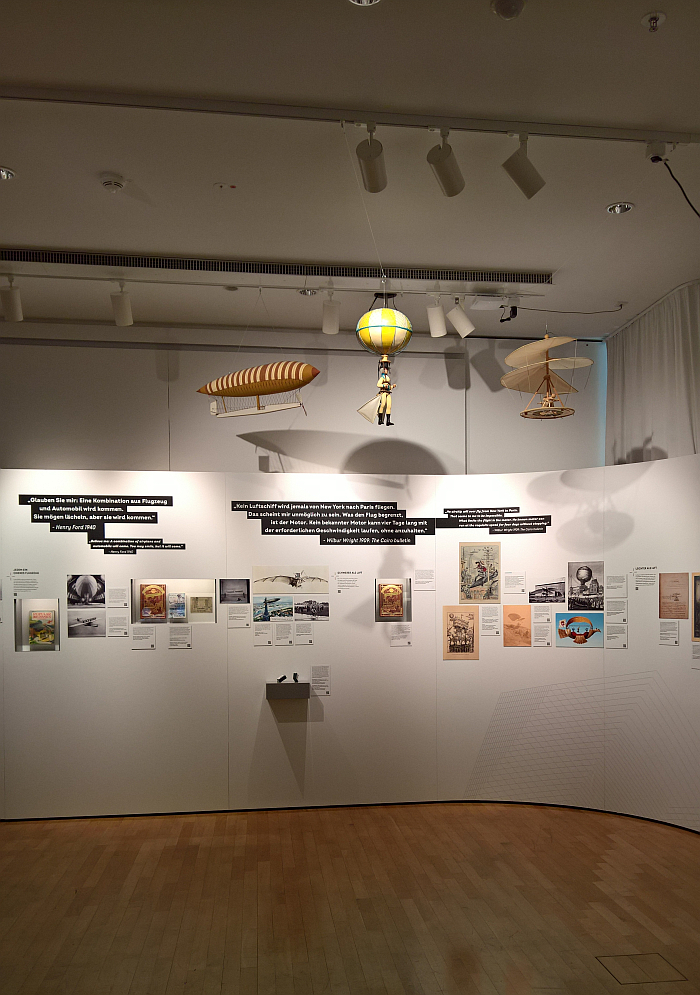
As an exhibition Back to Future doesn't directly approach that question, but does lead you to pose numerous others questions which in their sum allow one to approach possible answers.
Questions such as, for example, why after all these centuries is humanity still chasing the same desires?; questions such as, if as a species we are able to fully assess the consequences of new technology?; questions such as, is there a relationship between technology and democracy?; questions such as, is there a relationship between technology and the individual human ego?; questions such as, if we are able to distinguish between fiction and reality?; questions such as, what use new technology if it doesn't benefit society?
In context of the latter The Search for Another World, for example, features Gil Scott-Heron's Whitey On the Moon and its questioning of the millions of dollars spent on sending astronauts to the moon while on the streets of America millions live in abject poverty, are often unable to pay necessary, basic, medical bills? Humanity may have been striving for centuries to get to the moon, as one learns in Back to Future the first fictional account of a journey to the moon, Francis Godwin's The Man in the Moone being published in 1638, and thus just 28 years after the publication of the first detailed sketches of the moon surface by Galileo Galilei, but does that mean it should become reality when there are more tangible challenges here on Earth? Who actually gained from having Whitey On the Moon? Who'll actually gain from having anyone on Mars? What could the money being invested on Mars achieve on Earth? Why space tourism?
And questions which thereby help one understand that what are being considered in Back to Future are technological visions, and that technology is only part of the complex equation that is human civilisation, that technological visions exist alongside, co-exist with, social visions, economic visions, ecological visions, pedagogic visions, libertarian visions, etc, etc, etc.....
Or should co-exist with other visions.
However, the unshakable human belief that whatever the question, the answer is new technology, an understanding of the world which although it can be followed throughout the centuries of human civilization in many regards assumed its current form in the fury of the expansion of engineering in the nineteenth century, means that technological visions are all to often understood as something distinct, a means to an end in themselves, the ultimate expression of human ingenuity which will bring salvation, not something to be questioned.
And that in turn oft upsets the complex equation that is human civilisation, an equation of which technology is but a component. Which in turn oft leads not to salvation, but to problems.
Problems to be solved, logically, with new technology.
Ad nauseam, ad infinitum.....
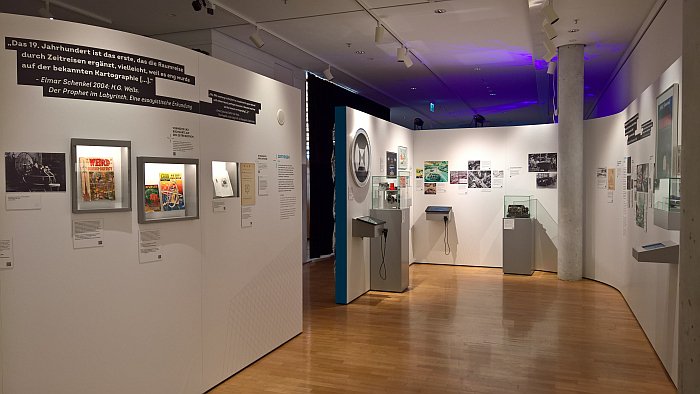
But what if we did question new technology?
What if we shook off our entrenched belief in the primacy of new technology?
What if we accepted technology as a component of the complex equation that is human civilisation rather than a distinct end in itself? What if we understood human ingenuity not in the development of new technology but in the considered use, or non-use, of new technology?
What if we forwent new technology?
What if rather than striving for Learning at the Touch of a Button we understood learning as a endless journey with no defined destination and that through the process of learning new questions invariably arise which enable previously unknown paths to become visible, what if we understood that optimisation isn't an answer in itself?
What if rather than Settling Distant Planets we stopped degrading and destroying the one we have, what if we collectively moved towards not just more ecologically sustainable societies, but more socially and economically sustainable societies, rather than searching for a new planet to mess up, what if rather than having visions we viewed?
What if rather than developing ever new Flying Objects we considered the why of the new flying object, considered if, just because something is technically possible must it become? Or could, should, it remain a fictional reality? Do we really need flying cars and delivery drones? Honest? Really??? Have you thought it through, considered it from the myriad perspectives one must, or are you looking at an old science fiction comic and confusing it for a reality? Are you thinking of yourself or society? Do we really want our skies awash with flying cars and delivery drones? Honest? Really??? Look up.....Look out your window...... Why?!?!?!
What if rather than Universal Translators we........
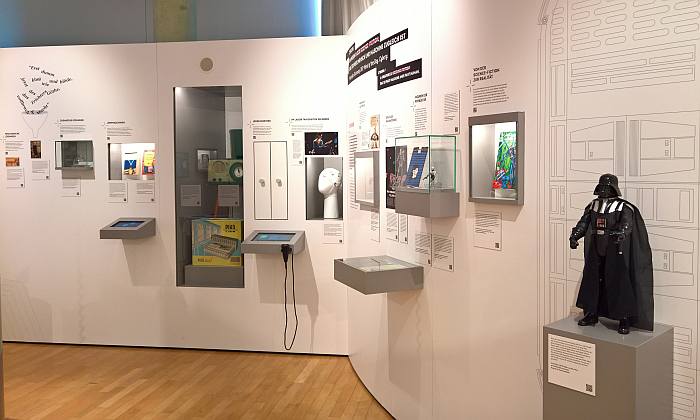
............all spoke the one language?
Times were when we largely did, certainly amongst the ruling classes. But on the one hand language is a cultural good and the earth as a monoculture is a thought as abominable as flying cars and delivery drones, and on the other if we moved now to one global language, over time we'd lose the depth of insight historic documents bring us, and as we all know understanding history is important in understanding the now and the future. And thus if we embrace our innumerable global languages, tools for quick and simple translation in daily communication, Douglas Adam's in-ear fish, would appear most welcome. *
Or put another way, new technology doesn't only lead to problems, new technology can be a boon. Can be the salvation it always promises to be.
Something very contemporaneously exemplified by the Videophone, a concept which as Back to Future elucidates, largely arose in the 19th century as a fictional extension of Alexander Graham Bell's audio telephone, became a technical reality in the 1920s and came into its own, zoomed in on itself, in the 2020s. And without which personal and professional communication during the pandemic would have been very different, the path through the pandemic would have been a much trickier one for many.
But how does our relationship with the videophone develop now that its use has become normalised? Even before Corona ever more individuals were making ever more phone calls visually on smartphones, for a great many videophones had swapped from fiction to reality; but on the other side the compulsion and obligation to participate in video calls arisen from the pandemic, a rejection of the enforced new behavioural codes, of the intrusions into the private spheres and personal autonomies, explicit in video calls, has seen a great many yearn for the end of the necessity, for a great many the reality of videophones mean they can happily remain fiction. How do we move forward? How do we integrate videophones into future society? To what degree will the video call become a new normal? What are the pros? What are the cons?
Questions which help underscore that wherever we currently are is but a snapshot of an ongoing process, is but a transitory moment on an path already reaching out ahead of us. And that that which is now a boon can remain a boon, but can also become a problem. A reality the briefest of historical reflections can but confirm.
And an understanding reinforced and underscored in Back to Future's considerations on, for example, Virtual Reality, Cyborgs, Autonomous Vehicles, or Artificial Intelligence; considerations which cause for reflection on where such still relatively young realisations of much older fictional visions, could, will, should lead us? Cause for reflection on the degree and context of the use of such still developing technologies in our societies. Cause for reflection on how we imagine technology integrating into and assisting daily life in coming ages? Cause for reflection on our future societies? And who decides?
Who decided to put Whitey on the Moon? Who decides to put anyone on Mars? Who decides the degree to which the video call becomes the new normal? Who decides that we need flying cars and delivery drones?
The answer should be us all, collectively; it probably won't be, as Whitey on the Moon ably demonstrates, but it should be us all.
Not least because, and as Back to Future helps one appreciate, whereas in previous generations new technological realities were, largely, and generalising dangerously, opt-in developments, developments we as individuals could largely take or leave, or which were limited in their distribution and availability to a select few; in coming generations new technological realities will increasingly be either developments we as individuals can, at best, opt-out off, and that not necessarily with ease, or will be developments that are as all-encompassing and all-invasive as that depicted in the fictional visions which have informed them. But will be real. And permanent. And therefore demands the we should all, collectively, decide if we want, for example, AI powered autonomous cars, if we want robotic security guards, if we want to colonise Mars, if we want videophones as standard, if we want flying cars and delivery drones.
And if by chance, if by some freakish mistake, some oversight, we should all, collectively, be allowed to make those decisions, that by necessity requires us all, individually, being able to reflect more rationally, objectively, honestly on the degree of fiction and reality in the belief that the answer to any question is new technology. Demands more rational, objective, honest reflections on the degree to which technology is the path to humanity's desires.
Back to Future is good place to start.
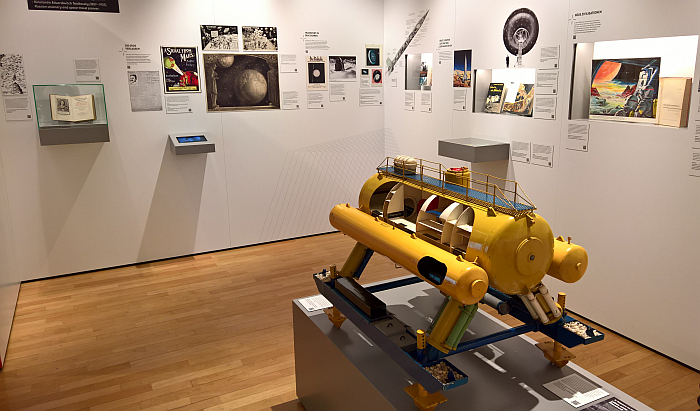
A well paced and accessible exhibition in which the pleasingly wide variety of objects and media presented are both complemented by six artistic projects which allow for differentiated perspectives on the varied themes, and supported by many, many, concise bilingual German/English texts, Back to Future, is an exhibition with a lot of reading, which as ever, is not a complaint, more a commendation, one of the joys of Back to Future is the setting of all its subjects in historical contexts, its explaining of the long development processes our contemporary technology visions have undergone, long development processes to which both fiction and reality have fundamentally contributed, and thereby helping demystify contemporary technology visions, taking from them any pretension of the avant-garde, and thereby allowing them to be considered as the sober technological propositions they are, free of fanfares and baubles.
Two of the joys of Back to Future is the effortless ease with which fiction and reality mix, you barely notice they are, and thus when you do it is all the more powerful and instructive.
Three of the joys of Back to Future is that it itself doesn't take a position on technology, on the relationships between technology and humanity, on technological visions, but leaves that to the viewer.
And in which context asks "What visions do we have today?"
As Back to Future itself makes very clear, exactly the same visions as previous generations. The very same desires as previous generations.
And beyond them? What technological visions are we giving future generations to follow up? What new desires has our contemporary society brought forth?
?
??
???
There is an argument to made, none. That we've resolved to navel gazing and monetising. That as a society we've either lost the faculties to develop new technological visions or are so busy trying to use contemporary technology to acquire power and profit, that we've forgotten to think ahead. That the only desires we'll bequeath to future generations are the still unfulfilled ones of previous generations, albeit confused by the technology advanced egotism and greed of our generation. That is one argument.
There is however also an argument to be made that we shouldn't develop any more visions; or more accurately that shouldn't develop any more technological visions, that we should concentrate on the social visions, economic visions, ecological visions, pedagogic visions, libertarian visions, etc, etc, etc.....
Which doesn't mean distancing oneself from new technology, doesn't mean stopping pushing the limits of technology ever further beyond their existing boundaries, doesn't mean stopping developing technological fictions, far from it, and as an exhibition Back to Future reminds us why we should keep doing all that, reminds that technology is an important tool which must develop; but does mean reflecting more critically than we all tend to on the relationships between technology and humanity, reflecting more critically than we all tend to on the role, function, purpose and place of technology in our cultures and societies, reflecting more critically than we all tend to on the connection between technology and our desires, on technology as a path. And also means understanding, and accepting, the equation that is human civilisation in all its complexity.
And that, not least because, it is the decisions we make, collectively and individually, which ultimately determine if the expression of our desires resides in fiction or reality.
Back to Future. Technology visions between fiction and reality is scheduled to run at the Museum für Kommunikation, Schaumainkai 53, 60596 Frankfurt until Sunday October 24th.
Full details can be found at www.mfk-frankfurt.de
* That the Babel Fish "by effectively removing all barriers to communication between different races and cultures, has caused more and bloodier wars than anything else in the history of creation" could be understood as cynical, but does poetically underscore that ultimately it comes down to us, not to technology, that the biggest problem is humans and as long as we place the individual above the society new technology will always lead to problems, see e.g. the Internet...... imagine what the internet could be ..... and then look at what we've made it.....
And as ever in these times, if you are planning visiting any exhibition please familiarise yourself in advance with the current ticketing, entry, safety, hygiene, cloakroom, etc rules and systems. And during your visit please stay safe, stay responsible, and above all, stay curious.......